Corndogs and Trembling: This Sickness Unto Fair
Sean Smuda was the judge for the 2011 photography class of the State Fair's 100th annual Fine Arts exhibition. Read on for his no-holds-barred behind-the-scenes take on the experience.
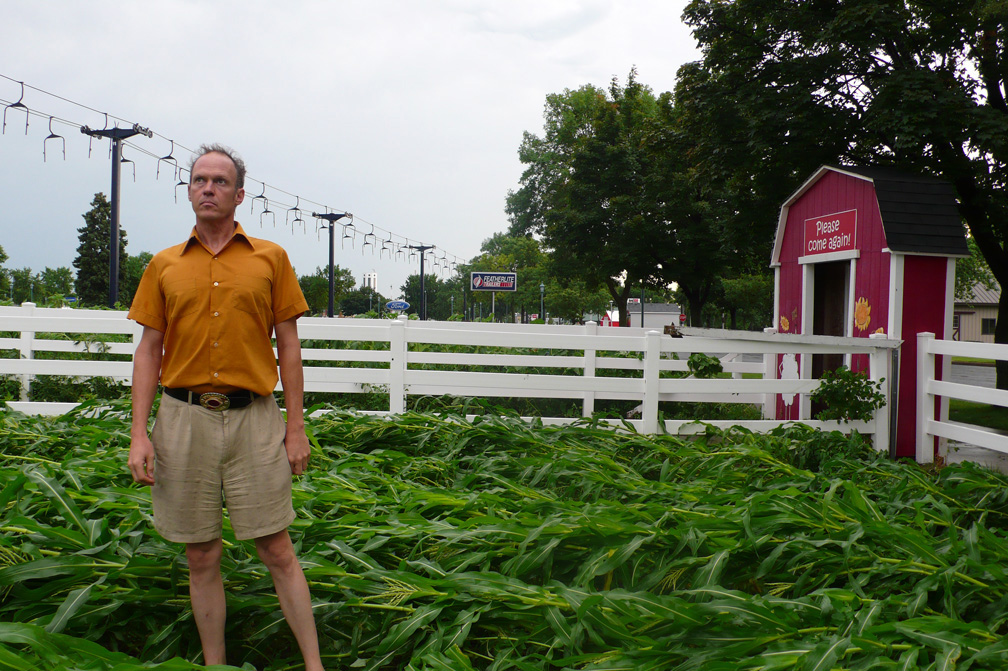

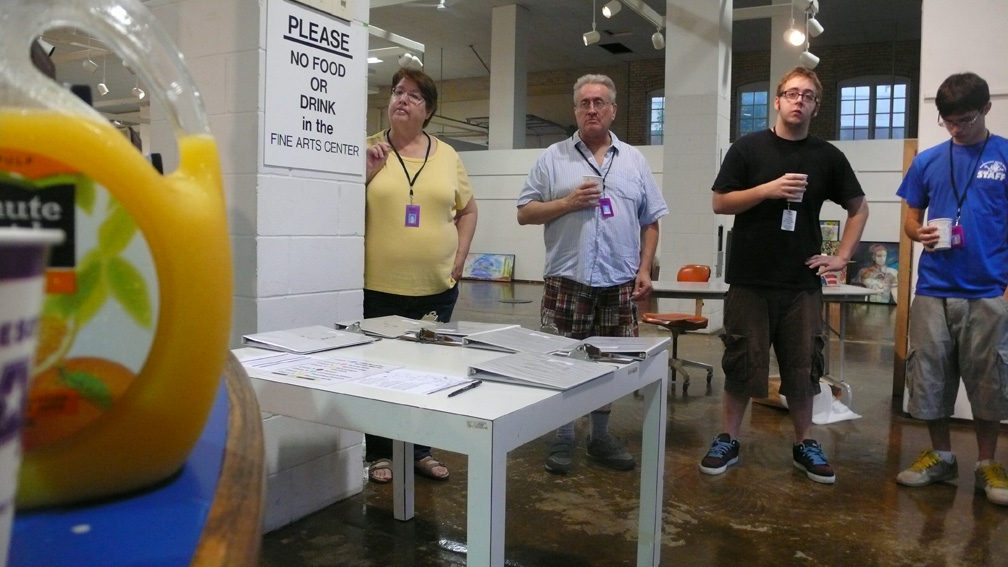



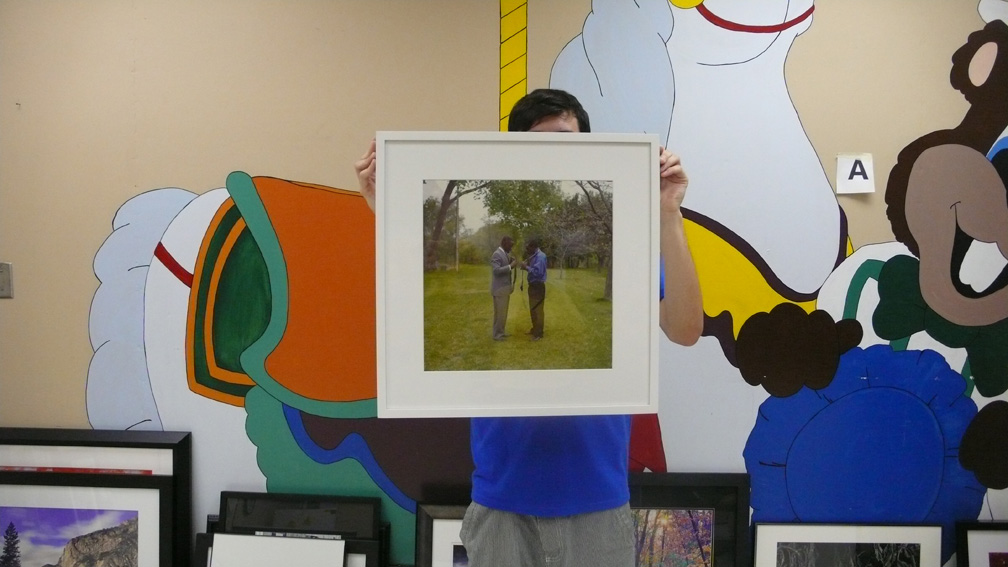
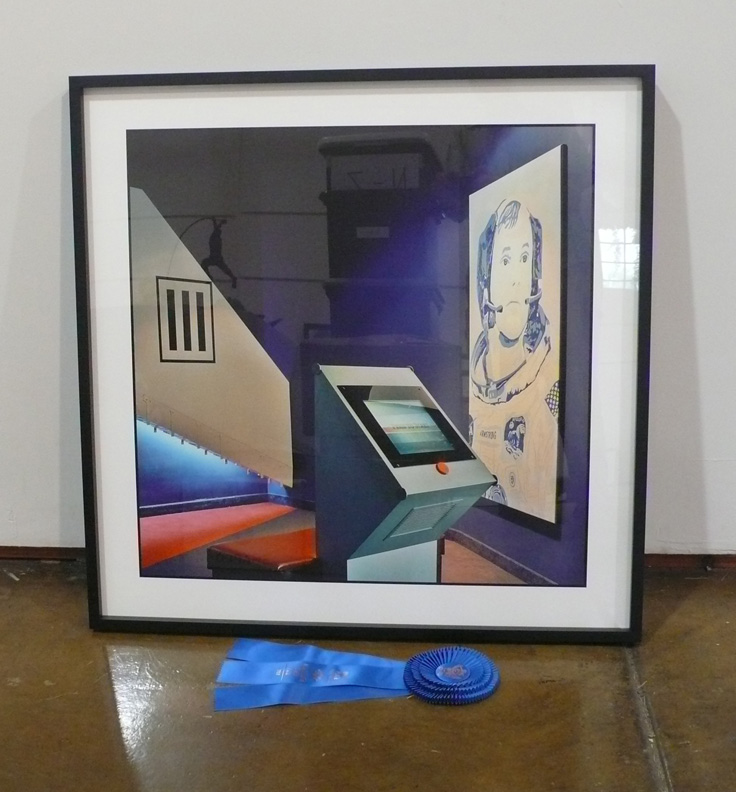
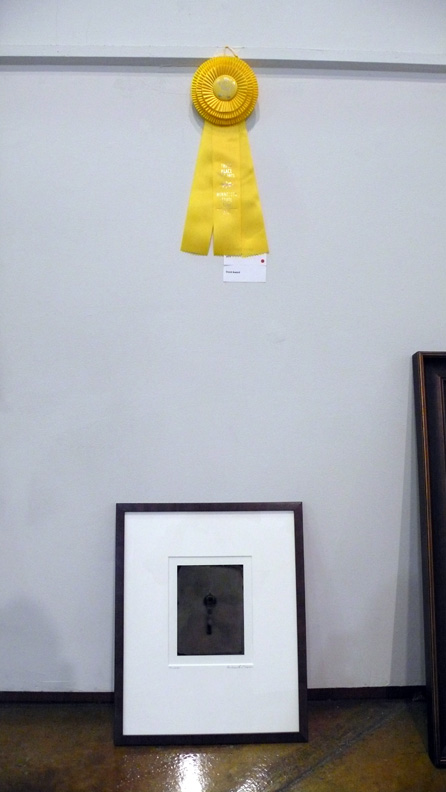
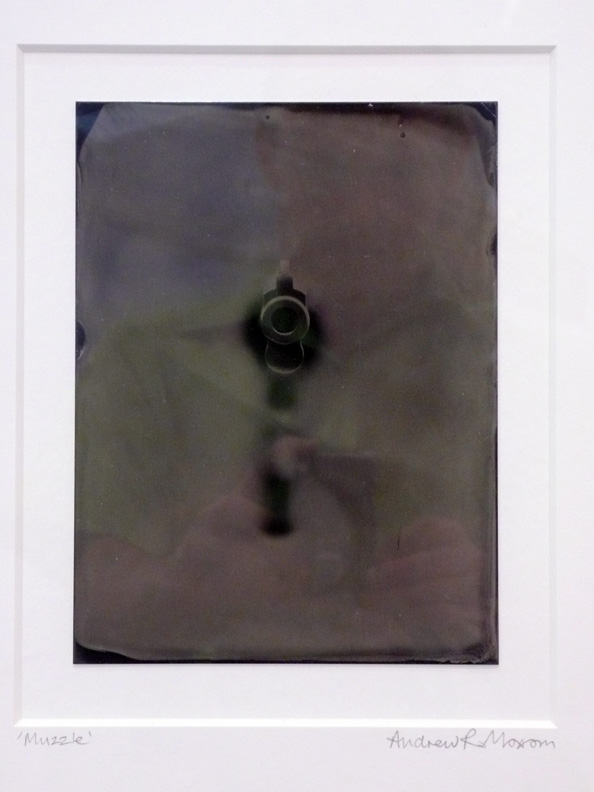
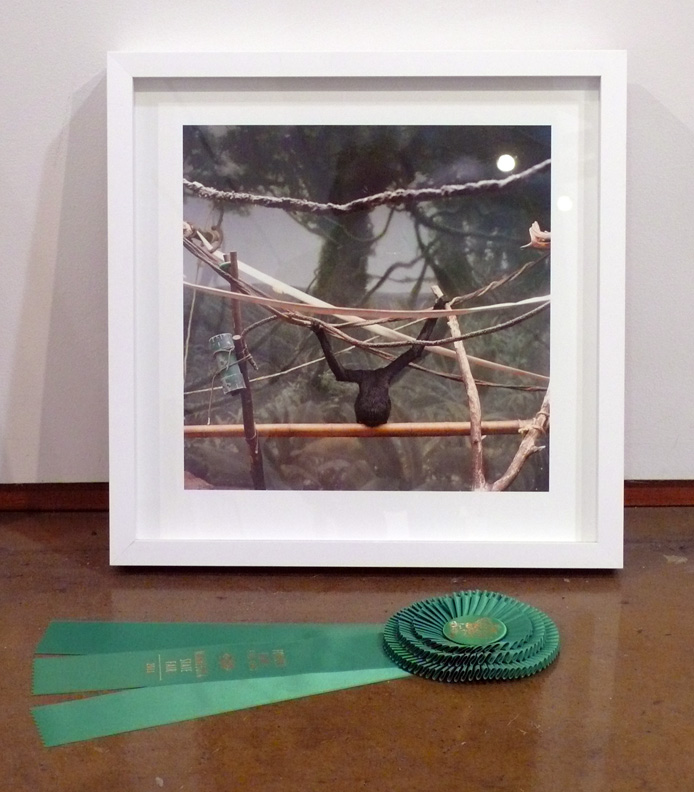
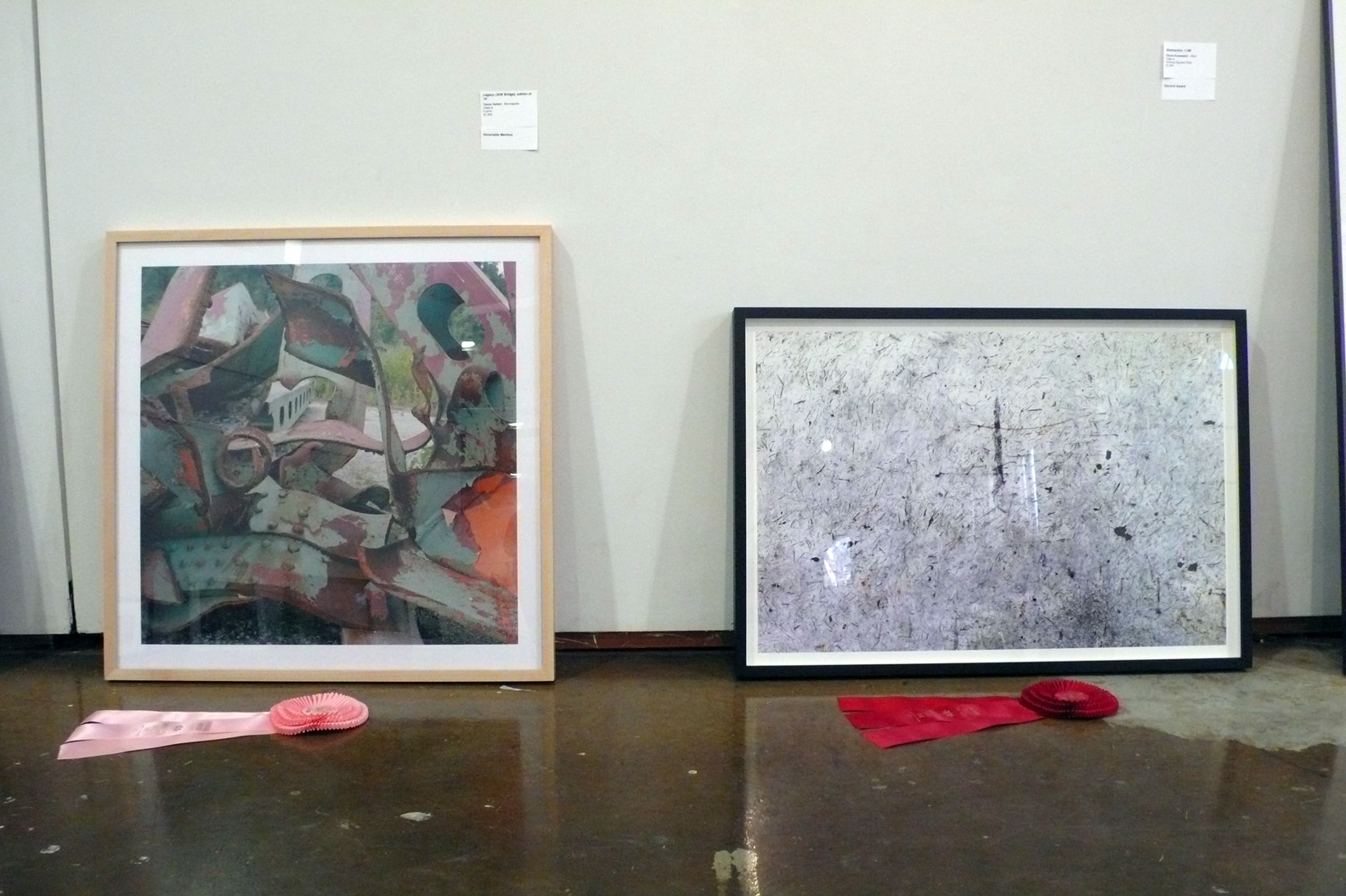
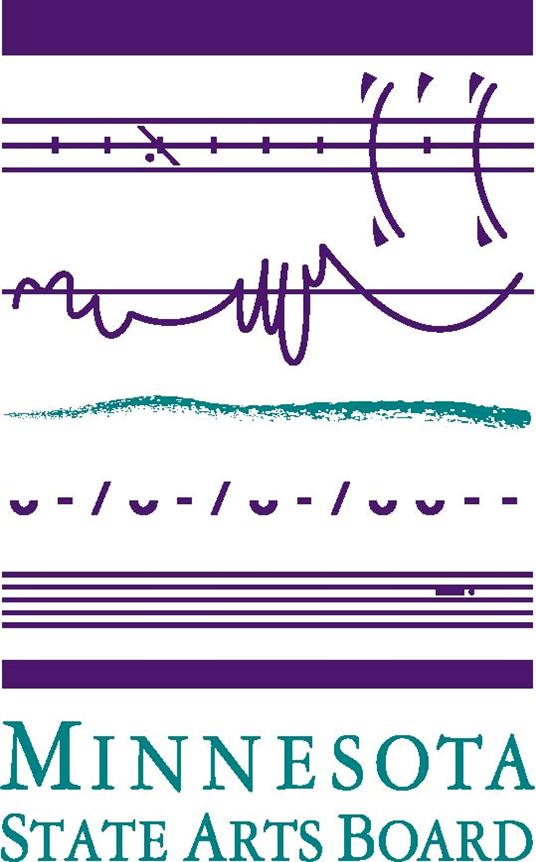
EVEN THOUGH I’VE PRETTY CONSISTENTLY GOTTEN MY WORK, and fairly odd work it is, into the Minnesota State Fair over the last ten years, I was still a bit surprised to get the email inviting me to jury the photography “class” for this year’s Fine Arts exhibition. Readers of my reports on Art Basel Miami are well aware of my take-no-prisoners, paranoiac critical methods — not the sort of acumen typically desired by institutions known more for pie-based judging.
But I love the Fine Arts at the fair! It is the annual revenge of populism over the many only semi-available institutional doors artists can go through for exhibiting, where the taste of a fellow starving artist or museum curator can open the art-barn gate to the cheese curd stand of recognition. The Fine Arts exhibition is a place where prominent families and parallel oddballs alike can be exposed to vast quantities of art, which they can simply consume/purchase on the spot or follow up with a studio visit and become patrons. It is a place of recognition and empowerment where for weeks afterwards people come up to its chosen artists on the street and say, “Hey, saw your piece at the Fair,” and then continue walking.
Small wonder then that the state fair’s Fine Arts show is also a place for controversy, peer pressure, and back-biting like no other. In this, the 100th year of the Fine Arts pavilion, I write to call for a cessation of hostilities and a re-examination of the methodologies of selection — for the greater good, in much the same way that the internet has forced us to reconsider social structure, or that advancements in animal genetics have forced other fair judges to reconsider the Hog.
There is a certain fear and trembling to being a state fair Fine Arts judge. “Am I going to alienate peers, squash budding talent, appear monomaniacal? Will it mean I can’t get into the Minnetonka Art Fair?” The correct answer is: ALL OF THE ABOVE. It’s nothing personal if you don’t make the cut — if you’re an artist with talent to burn, keep burning!
As with art-making, judging is about a creating a general excellence in a body of work, guided by a personal vision and technical aesthetic, which determines its interest and uniqueness. It’s that simple.
OK, maybe it’s not. There is unavoidably an awareness of trends, schools of thought, and the idiosyncrasies of any given medium to consider, never mind shared alma maters and Masonic handshakes. And, of course, you can only work with what you’ve got. From the submissions I saw, some artists are still finding bliss with Impressionism, black and white landscapes, and chainsaw sculpture. That’s fine, but art historically-speaking, anything in such established categories needs to provide a higher dialectic in order not to be merely a technical exercise.
I asked my fellow judges about their decision-making processes, but many were reluctant to talk or even have their replies attributed. Some said they’d received weird, hostile emails post-judging (something to which I can attest) and didn’t want anymore of them. One pointed me to this Facebook thread: “It’s a shame so many realist artists are being put on the back burner at the expense of incompetent judges. I think they’ll have a better show if they have three judges with different styles accepting work rather than one that has no clue of what he/she’s doing.”
Maybe three judges, each incompetent in different ways, are better than one? I concur with the writer that it is perhaps unfair to have only one judge per “class,” and would add that it might also be unfair to do the entirety of the judging in just one day; the competition’s photography class, alone, had more than 700 entries this year.
That said, it is entirely probable that any other method for judging art entries would involve both major restructuring and expense and still wouldn’t yield significantly better results. Possible too that bringing in additional judges might foster even more acrimony towards the process than there is currently. For instance, how would you feel about anonymous, unaccountable push-button voting and/or week-long debates that stagnate the selection process?
Considering the alternatives, there is something to be said for relying on the reckoning of the individual judge, who must defend and put in perspective his/her decisions. As “recognized individuals” (which is how we are chosen for the task, according to the online prospectus) every judge in every class is undeniably qualified in their respective fields to be themselves. If you look at my own work and then closely at the top four prizes, you’ll see what I mean.
______________________________________________________
There is a certain fear and trembling to being a state fair Fine Arts judge. “Am I going to alienate peers, squash budding talent, appear monomaniacal? Will it mean I can’t get into the Minnetonka Art Fair?” The correct answer is: ALL OF THE ABOVE.
______________________________________________________
And I will defend what I consider to be a strong and impartial thesis of aesthetic exploration and a combined retelling of 2001: A Space Odyssey meets Planet of the Apes.
The aforementioned complaint on Facebook opens up the larger question: What is the fair’s art competition all about, anyway? Is it the eternal struggle between craft and conceptualism; modernism/postmodernism, farm and city? A contest between realism (populism) and self-expression (individualism)? How much of either is too much? And which is more honest, which more pretentious? Were you born in Minneapolis or St Paul, New York or Tulsa? Like the fair itself, the Fine Arts competition is about quality of life: that of the environment and mind.
Let’s call it the “Garth Brooks/Sonic Youth axis.”
Yes, there has been room for both on the fair’s Grandstand, and yes, we know who wins in terms of sales, and who prevails in terms of experimentation (Chris Gaines notwithstanding). But what both sides share, and what the fair uniformly recognizes, is a sense of immediacy and rootedness in a clear identity. The fair is not about lengthy contextualizations, guided tours, or didactics on the wall; it’s about representing the collective unconscious beyond the pretentiousness of the act. It’s noteworthy that, for all their Big Apple cunning, Sonic Youth are not the ones who changed their names. However, both Garth and Sonic Youth rock the paradox of sing-along populism and its finer aesthetic manipulations. And if you are sufficiently down home and/or hip, then you too not only understand the tropes of America and Americana, but can use that knowledge to either reinforce “core values” or explore and exploit them in the name of intellectual freedom (and dig a corn dog). Now that’s quality of Life, which is after all, what both the Fair and the Fine Arts competition are about.
*****
Certainly, I was aware of the slam the Fine Arts show took from the press (specifically, critic Mary Abbe) last year, and I did my best to raise the stakes and select work which might stand in defiance of her criticisms that the competition was overrun with clichéd, lackluster work. Also influential as I judged this year’s entries was the time I assembled a team to document the entire Fine Arts show — a three-day experience which rendered me acutely aware of the exhibition’s categories and excesses in the name of State Identity. To facilitate a departure from tradition and rep the Sonic Youths of today, I solicited as many artists working in as many mediums as I could find to PLEASE enter the fair and keep it a vibrant living organism! (And yes, I did check with mission control at the fair first to make sure doing so was both kosher and halal).
In general, a heartfelt sincerity and well-rounded attitude (and judging by their bios, experience) was expressed by all who responded to the questionnaire I sent my judge-peers, asking about the processes by which they made the selections in their classes this year.
Here are some of the responses I got back from this year’s Fine Arts judges (you can read the rest of our criteria in the show catalogue as well):
“I was trying to find the best work in the categories that presented themselves as themes that artists were submitting — … abstraction, conceptual, animal … etc., and the just plain wacky, but pushed with such conviction and passion I had to acknowledge them.”
“My criteria for judging were based on craftsmanship, creativity, and the execution of the two. When judging the show I tried to represent the best of what was submitted and did the best I could to remove any personal bias. I wanted a ‘Minnesota’ show.”
And my own stated process for judging submissions? “I look for revelations in the work and watch for their follow-throughs. Allure is both physical and conceptual; which do we see first and which lasts longer? There are always certain categories at work that factor into a work’s resonance. I look through the rootedness in craft or fidelity to categories, and instead towards singularities.”
______________________________________________________
The Fine Arts’ show categories are called “classes,” which reads like a cross between taxonomies for controlled substances and insect collecting.
______________________________________________________
But, of course, I wrote that long before looking at more than 700 works in seven hours, with four assistants sorting and holding up each piece, then placing them in yes/no/maybe piles. (Kudos to one of the assistants for helping me keep it real every time I looked at his “With the Void Full Powers” tattoo.) There is a certain need to vent after an overdose of the 1.6-works-per-minute vertigo, a Costco lunch (I heard they used to take the judges out to eat!), and general frustration at the sometimes inadequate “classes”.
In one post-traumatic Facebook comment, I wrote: “Things you will see in the State Fair this year: dudes on hogs, chix with guns. Things you won’t see: black and white landscapes, flowers, insects. Prepare for the endtimes!”
This rant reflected my real desire to see a return to the real, away from the idealized pictorials and clichéd notions of the sort of photography you often see at the fair. And it received its due response: “All the above tropes to be supplanted by seedy American self-mythologizing (“dudes on hogs, chix with guns”)? Does this mean we’ll see more rusted RV’s, suburban ennui, and sad people on beds? Call me disgruntled, but I hope this ‘apocalypse’ will be more than a boastful pedantic exercise.”
I hope that, having had a bit of time to reflect, I was being neither boastful nor pedantic in my venting; and, as it turns out, at the fair this year you will see some ‘scapes, insects and flowers in the mix, as well as some real, American scrapbook-style photos — all of which won out on pure content.
At 100 years old, it is perhaps time for some reconsiderations of the show — maybe it’s time, specifically, to rethink notions of craft and concept, as clearly the means of both production and interaction have changed. For one thing, the Fine Arts’ show categories are called “classes,” which reads like a cross between taxonomies for controlled substances and insect collecting.
Hmm, on second thought, maybe that shouldn’t change.
The definitions of these “classes” do not accommodate all works — such as the shaped, 2-D photograph that had to be sent to the sculpture judge, where it was truly out of place. But to admit more than the eight classes seems indeed beyond the parameters of the current building space and perhaps beyond the budget as well. For a few years, there has been talk of photography getting its own building, as it had for the judging. Time-based art forms would be the next logical inclusion to the competition, including those done online which could then be projected. And of course a Hipster Pavilion should be established for Experimental Media and Performance Art.
Despite all these travails I nonetheless cannot deny the right to whingeing. May it create a counter-consensus or peter out! It’s healthy, it’s individualistic, and it’s as American as the Tea Baggers or Libertarians (even if Minnesota-nice hides it grimacing in the smile bunker)! But it should be responsible. Rather than insult the competence of the judges, I would encourage a Kierkegaardian awareness that the individual must occasionally attempt a “so-selfish it’s selfless” sacrifice to gain faith. That it may lead, through a sense of infinite resignation to a state of immediacy where the spirit requires higher form. And that these thoughts tide the artist over until next year’s submission round.
You can bet that’s the way I’ll be feeling when I am rejected from all subsequent fairs and competitions statewide. And you can be certain I’ll partake of at least a little whingeing of my own, considering the easy target I’ve made of myself in writing this.
_____________________________________________________
About the author: Sean Smuda is an artist and a critic-on-a-stick; his next few shows are in NYC and France. He is a fiscal year 2010 recipient of a grant from the Minnesota State Arts Board. This activity is funded, in part, by the arts and cultural heritage fund as appropriated by the Minnesota State Legislature with money from the Legacy Amendment vote of the people of Minnesota on November 4, 2008
_____________________________________________________
Postlude
Went to the preview opening without a bodyguard, and the show looks the best I’ve ever seen thanks to new Superintendent Jim Clark’s judicious placement of pieces — not according to medium, taxonomy, or quaint notions about what a fair is “supposed” to represent, but according to palette, design, and content. There is, for the first time, a well designed, full color catalogue of the top prizes. It is also good to have the work of the judges out of the broom closet and in the center, most-vandalizable area. Represent! This ain’t curated by robots — yet! As for Mary Abbe’s review this year — well, I guess if the (state) identity art is up to snuff, no need to comment on the Fine Art prizes (as of yet anyway). Kinda meh, right? As though all that is required is a semi-return to normalcy and representation (another goat painting — cute!) to placate the masses — as no real consideration is given to the prizes, but rather to how accurately it represents us Minnesotans, I guess we are on the Garth Brooks side of things here.
Nonetheless, we’re lucky to have it at all. As artists eschew traditional mediums and create more digital and social genre-busting works the entire endeavor of the Fine Art Pavilion can sometimes appear as simply a nod to another time…when modernism was on a pedestal that became a stick.
This essay originally appeared in August 2011.